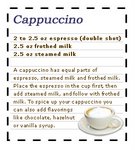Almost as old as time, tea has been a favored drink for centuries – regardless of class or social standing. It has been enjoyed by the elite, the aristocracy, and at the same time – the common man.
You see, legend has it that Chinese Emperor Shen Nung was sitting beneath a Camellia Sinensis tree when some of its leaves blew into his cauldron of boiling water. Being a renowned herbalist, Shen Nung decided to try the potion – thus accidentally concocting the first pot of tea in 2737 BC. This event, according to folklore, is where the story of tea begins.
Now, fast-forward two thousand years to 618 AD, when the Chinese scholar, Lu Yu wrote the first book about tea. The Ch'a Ching. It's then, during the Tang Dynasty that tea gained popularity and became available to the common man.
The Ch'a Ching would forever change the face of tea.
Lu Yu expanded on the traditional preparation of tea and heightened it to a near religious experience. With set rituals, implements and guidelines – tea became ceremonial.
The Cha' Ching was extremely influential in Japan, where it transformed the traditional tea ceremony into something much more sophisticated. By the 13th century, the Japanese tea ceremony had become associated with humility, naturalism and Zen Buddhism.
By the 16th century, tea drinking in Japan spread to every class, as the Japanese became absolutely engrossed with all things tea – including the tea ceremony. Tea Masters like Takeno Joo began teaching the ceremony in special rooms – known today as Tea Rooms. Ranging in size from large to small, these buildings, called chashitsu in Japanese, were influenced by the Zen philosophy of simplicity and tranquility.
A similar philosophy was seen in England during the reign of Charles II, when tea was introduced to the British Isles by way of the British East India Company. Tea had become extremely fashionable in aristocratic circles thanks to Queen Catherine of Braganza, who married Charles II of England. Very formal tea parties then began to sweep Britain because of Queen Catherine's love for tea.
To fill the increasing demand for tea, the British East India Company monopolized the tea trade with India and the Far East for years, inflating costs and imposing high taxes on tea. Tea smugglers and criminal gangs began competing with the British East India Company, providing tea without the high taxes to the less affluent in Britain and America.
The tax on tea became such a hot political issue in Colonial America that it sparked the Boston Tea Party on December 16, 1773. At that time, a majority of colonists felt that the tax Britain imposed on tea was unfair since they were not represented in Parliament.
So in retaliation, when three ships from the British East India Company reached Boston Harbor filled with tea, the colonists refused to pay the tax and allow the tea to come ashore. At the same time however, a naval blockade prevented the ships from leaving without paying a duty on the tea.
It became a stalemate until the enraged colonists, led by Samuel Adams and Josiah Quincy took matters into their own hands. They disguised themselves as Mohawk Indians, boarded the three ships, split open the tea chests and threw the tea into the harbor. This event is said to have sparked the American Revolution, and incidentally, the beginning of the end of the British East India Company's monopoly on trade with China.
By the 19th Century, tea drinking had fallen out of favor in America, but had become firmly established as part of the British way of life. So much so, that during World War I and II, the British government took control over the importation and rationing of tea.
For nearly three hundred years, nearly a third of all the world's tea was bought and sold at the London Tea Auction. It was sent from London warehouses to retailers around the world specializing in blending and packaging. But as countries like India and Sri Lanka gained independence, many estate owners preferred to sell their tea without using the London Tea Auction as a middleman.
These countries and others, including China, began exporting tea independently after the London Tea Auction closed in 1998. The popularity of White Tea, specifically White Silver Needle Tea harvested from China's Fujian Province, has grown in popularity around the world since the close of the auction.
American-owned companies like Teaposy began using the Fujian White Tea for blooming teas. These blooms are carefully hand-sewn by artists who tie the tealeaves around flower blossoms – creating teaposies. When the teaposies are steeping in a clear glass pot, they blossom into unique and beautiful shapes and colors. In a sense, these trendy blooms have brought tea full circle – bringing the tradition of ceremony back to tea.
Subscribe to:
Post Comments (Atom)











No comments:
Post a Comment